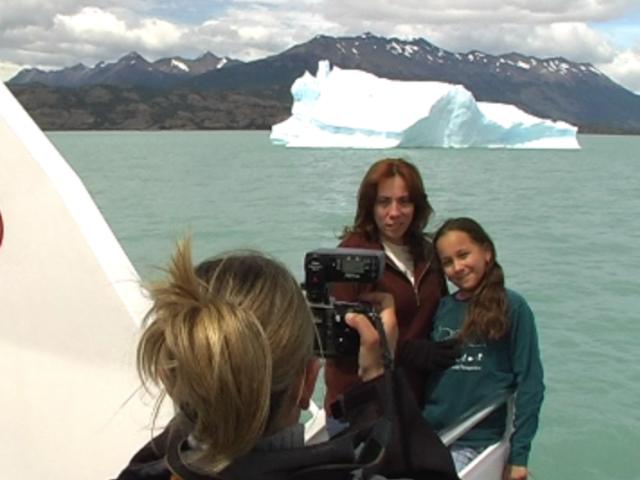Llicenciat per la Facultat de Belles arts de Conca, Universitat de Castella - La Manxa. Doctor en Belles arts per la Facultat de Belles arts de Conca, Universitat de Castella - La Manxa. És professor de la Facultat de Belles arts de Pontevedra, Universidade de Vigo. Centra el seu treball en el mitjà audiovisual, realitzant vídeo, escultura, fotografia, instal·lacions i àudio. Ha compost bandes sonores per a teatre, dansa contemporània, i produccions musicals. Viu i treballa a Vigo.
ÚLTIMES EXPOSICIONS INDIVIDUALS: 2002 Fricción. CGAC, Santiago de Compostel·la. 2003 Norma. Galeria T20, Foto trobades 2003, Murcia. What is the price of love?. Procesalia 2003. Coro da Igrexa da Universidade, Santiago de Compostel·la. (Amb María Ruido). 2003 - 2004 Morgen ist kein never tag. Stiftung DKM, Duisburg, Alemanya. 2004 Sin preguntas, con respuesta. Galería Moriarty,, Madrid. 2005-2006 Todo lo que hay dentro. Galeria Magda Bellotti, Madrid. 2006 Nuestro refugio se reduce a la noche.V/06.1st Venice Videoart Fair, Stand Galería Magda Bellotti, Venecia. 2007 Mirar sen que nada responda. Galería Ad Hoc, Vigo.

El subjecte entre els límits de la ficció i el documental, històries que dilueixen bogues i les relacions de poder amb cadascun dels personatges sotmesos a diferents dictats i instruccions. Ficcional i epocal, ens fa qüestionar la naturalesa real o fictícia, les solucions en narrar, relatar històries que insisteixen i emfatitzen fets quotidians.
L'home com a individu sotmès a un relat sense oïdors, a una revisió de la sexualitat i el gènere en una societat que li nega altres existències i les unifica sense límits. Un mateix gest que canvia de significat i qüestiona les categories i aprenentatges dels rols, els estereotips de masculinitat com a construcció social i també política de com ens movem en un espai.
L'individu es confronta amb la seva pròpia imatge en una cerca incessant de la seva pròpia identitat, una lluita que obliga a buscar en el seu entorn noves formes de autoafirmació.
La relació de les persones en la societat s'estructura en diferents sistemes de comunicació. Els objectes contenen atribucions encaminades a codificar ítems d'informació. Els materials amb els quals construeixen, el disseny i l'elecció de la funcionalitat no és innocent. Es generen des del seu gènesi relacionis de poder i la seva representació defineix el status de l'individu. Cada objecte té implícit un judici sobre com som, sobre els nostres desitjos i com ens vam mostrar als altres, fins i tot deliberadament podem convertir-los en una mastegués que ens permet romandre ocults després d'ells. Els objectes quotidians són interpretacions contemporànies de la identitat. El procés d'identificació del subjecte amb els seus objectes suposa un ingrés en l'àmbit de la consciència.
Construccions mentals de les nostres pulsions són traslladades als objectes que ens envolten. Es converteixen així en representacions de la nostra pròpia identitat. La selecció de cadascun d'ells segueix un procés intrapsíquic, inconscient no comunicacional. Un mecanisme ple de múltiples causalitats i que aquesta contaminat pels patrons de consum estandarditzats per la publicitat i la societat capitalista, per la qual l'individu es redueix a un mer objecte/subjecte de consum
Mes allà cada elecció d'un objecte col·loca a la persona en una disyuntiva: desitjar és voler, voler és buscar; buscar és escollir. La cerca no sempre és evidenciable i en el resultat d'ella no sempre aconsegueix a consumar el desig. La cerca es converteix en una fi. Les persones s'arremolinen davant múltiples ofertes sense poder decidir. Al llarg del temps se succeeix el mateix ritu de cerca, selecció i menyspreu de l'objecte. Aquest procés tanca una metàfora sobre la relació de l'individu amb els seus semblants i el desig de cerca d'una identitat pròpia.
L'espai en què vivim és fonamental: l'urbs, les seves construccions i l'enclavament geogràfic es fan necessaris al subjecte com a referents del seu món exterior. El més proper seria la casa i tots aquells objectes que habiten en ella. La casa és l'entorn que aglutina les coordenades culturals de la societat en què es troba immers l'individu com a espai íntim conté els objectes propis,- testimoniatges de la memòria- als quals atorga valor i significació. Els objectes parlen de la nostra història, del passat, carregats d'evocacions sobre els records. Amaguen significats que solament nosaltres coneixem i que no sempre es correspon amb l'evident. La casa defineix el territori del privat enfront del públic, l'interior enfront de l'exterior, l'aïllament enfront del connexió. En la llar passem tota una vida o una vida paral·lela a l'exterior, conté una història pròpia. És una representació de l'individu en la seva cerca identitat, de signes d'identificació, conté una voluntat de diferenciar-se i un reflex del status social de l'individu.
Els hotels són espais pensats amb la funció exclusiva de respondre a les necessitats de l'hoste. Estan dissenyats sobre les premisses de la funcionalitat, encara que en ocasions s'emmascara amb altres elements. El mobiliari s'escull com una mercaderia freturosa de qualsevol element emocional. L'espai aquesta configurat amb la intencionalitat de facilitar a l'individu una sort de comoditats. El temps és l'única variable que és modificable en aquest territori. El visitant defineix els limitis en termes de durada i intensitat però gens pot fer per trastocar l'espai que ho acull. El seu equipatge conté els escassos objectes amb contingut referencial que li envolten.
L'hotel és un espai no emocional on la persona aquesta totalment deslligada de la significació dels objectes que li envolten; un espai exempt de conflictes i confrontacions i és des d'aquest punt de vista quan es converteix en un element alliberador. Una atmosfera impersonal que alimenta un distanciament dels afectes implícits en els objectes propis i el seu entorn. No comporta una negació de la realitat, senzillament confronta, descobreix o allibera de les correspondències emocionals dels objectes que defineixen la biografia del subjecte. L'individu pot despullar-se de qualsevol figuració de la seva existència, enfrontar-se amb cert allunyament de la realitat a les seves pròpies visions interiors.